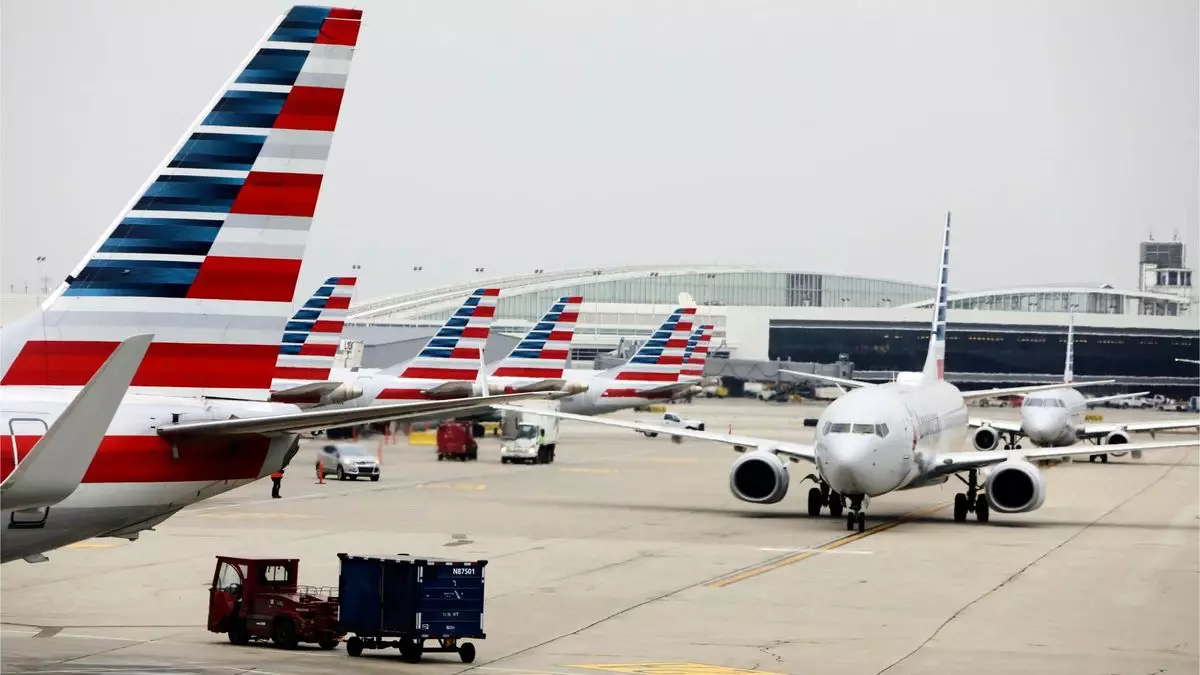In the competitive airline industry, the provision of in-flight WiFi has become a critical component of customer experience. While some airlines have embraced the trend of offering complimentary connectivity, American Airlines remains on the fence regarding its commitment to free WiFi. Although they provide a limited service, such as 20 minutes of free, ad-supported WiFi per flight and free access for T-Mobile customers, these offerings are overshadowed by more progressive competitors like Delta and JetBlue, both of which have adopted models prioritizing passenger connectivity.
Kim Cisek, the vice president of customer experience and product management at American Airlines, hinted at exciting developments during a recent interview. Although she refrained from committing to immediate changes in WiFi policy, her optimism about the future was evident. Cisek emphasized the importance of establishing a solid foundation before implementing free WiFi, suggesting a meticulous strategy rather than a rushed decision. The airline acknowledges that there is room for improvement, especially in light of advancements made by other carriers. American’s cautious yet deliberate approach raises questions about its competitive edge in a market increasingly focused on passenger convenience.
When assessing American Airlines against its peers, it becomes apparent that the airline is lagging in several areas. Delta, for example, has made strides in offering free WiFi to all SkyMiles members, quickly evolving its service to include international flights. Similarly, Hawaiian Airlines and JetBlue have set a precedent with their complimentary Internet service, indicating a clear demand for such amenities among travelers. In contrast, the announcement from United Airlines regarding its intention to deploy free WiFi enabled by SpaceX’s Starlink technology further illustrates a growing trend toward enhanced connectivity. American Airlines is at a crossroads; while it is equipped with high-speed satellite WiFi on much of its narrowbody fleet, the question remains whether its incremental improvements will suffice amid rising customer expectations.
Despite the competitive challenges, American Airlines is not entirely stagnant. The introduction of gate-to-gate WiFi on its narrowbody and regional aircraft suggests a positive trajectory. Cisek noted that the company is investing in technological upgrades and maintaining a reliable service experience. As they expand their capabilities to widebody aircraft, which are set to be retrofitted with new interiors, American Airlines is signaling a commitment to enhancing passenger experience, albeit at a slower pace than some of its competitors.
American Airlines’ current positioning on free WiFi is indicative of a broader trend in the airline industry, where customer experience is becoming paramount. While the airline is taking steps towards improving connectivity, there is an underlying urgency for it to catch up with competitors already leading the charge. As Cisek suggests, the airline is focused on building a reliable foundation for its digital offerings, but one wonders how long they will maintain the wait-and-see attitude before they adopt more aggressive strategies in the race for in-flight connectivity. The future of free WiFi at American Airlines remains uncertain, but the demand from passengers is clear: they want reliable, uninterrupted connectivity as part of their travel experience.

